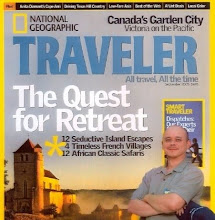Volunteers Worldwide Mobilize for Ocean Conservancy International Coastal Cleanup

WASHINGTON
, Sept. 17, 2011 - Today, Ocean Conservancy and hundreds of thousands of volunteers around the world are hitting their local beaches, lakes, rivers, and waterways for the 26th Annual International Coastal Cleanup – the largest volunteer effort of its kind. Over the past 25 years, more than eight and a half million volunteers have removed 145 million pounds of trash in over 150 countries. Participants will spend the morning removing trash from coastlines and rivers all while keeping track of every item they find. Ocean Conservancy uses that data to produce the world's only annual country-by-country, state-by-state index of ocean trash. The report is shared with the public, industry, and government officials as we work together to find solutions to this serious problem.
"Trash littering our beaches and choking our ecosystems is a threat to wildlife, our coastal economies, and ultimately to the ability of the ocean to sustain us," said Vikki Spruill, Ocean Conservancy's President and CEO. "You name it, it has been found on the beach. The eight million pounds of trash collected during last year's Cleanup would cover about 170 football fields a foot deep.
"Ocean Conservancy's vision is for trash free seas. This problem is entirely preventable, and keeping our ocean free from trash is one of the easiest ways we can make the ocean more resilient." said Spruill. "The Cleanup gives everyone a chance to work in their community and be part of this global movement to protect our ocean. People from Nebraska to India to South Africa and Indonesia join the Cleanup because they are passionate about our ocean and want to make a difference. Companies organize employees for service days to help their communities. The Cleanup is the gateway for people from all walks of life to exercise their commitment to conservation."
Armed with knowledge about the most prevalent components of marine trash, officials can make informed policy decisions, community leaders can tailor and expand recycling and other trash-reduction programs, corporate decision makers can improve technology and reduce packaging, and individuals can recycle, reuse, or properly dispose of trash to keep these items out of the ocean in the first place.
| |
| TRASH ITEM | | 25 Year Total | |
| Cigarettes/Cigarette Filters | | 52,907,756 - 32% | |
| Food Wrapper/Containers | | 14,766,533 - 9% | |
| Caps/Lids | | 13,585,425 - 8% | |
| Cups, Plates, Forks, Knives, Spoons | | 10,112,038 - 6% | |
| Beverage Bottles (plastic) | | 9,549,156 - 6% | |
| Bags (plastic) | | 7,825,319 - 5% | |
| Beverage Bottles (glass) | | 7,062,199 - 4% | |
| Beverage Cans | | 6,753,260 - 4% | |
| Straw/Stirrers | | 6,263,453 - 4% | |
| Rope | | 3,251,948 - 2% | |
| |
| | |
Visit
www.oceanconservancy.org/cleanup for additional information and to view our latest report on ocean trash -
Tracking Trash - view our
top ten list of actions everyone can take to fight ocean trash. The Coca-Cola Company has supported Ocean Conservancy's International Coastal Cleanup for the past 16 years. Last year, Coca-Cola activated a global employee engagement campaign around the Cleanup called "Pick it Up, Clean it Up, Sea Change!" Nearly 26,000 Coca-Cola system associates, their friends and families in 175 locations across 40 countries participated in the Cleanup, contributing more than 200,000 hours of volunteer time. As part of its commitment to address global climate change, Bank of America has supported the Cleanup for the past several years, with thousands of employees participating in Cleanup events in the United States and around the world. Other national sponsors include National Oceanic and Atmospheric Administration, Altria Group, Inc, The Walt Disney Company, Landshark Lager, Brunswick Public Foundation, and The Dow Chemical Company.
Ocean Conservancy is the world's foremost advocate for the oceans. Through science-based advocacy, research, and public education, we inform, inspire and empower people to speak and act for the ocean. Ocean Conservancy is headquartered in Washington, D.C., and has offices in Florida, the Gulf of Mexico, and the Pacific, with support from more than half a million members and volunteers. To learn more about Ocean Conservancy visit www.oceanconservancy.org. Melvin Wylie
 We all have a part to play in the eco system. Everything we do affects the environment around us. From logging, strip mining, deforestation, water pollution, population expansion, the list goes on. All these things affect the wildlife and in turn affect the population, that's human population and the wildlife population. We all know capturing the perfect picture can communicate more than words. In this episode I will be talking with Sebastian about wildlife conservation.
We all have a part to play in the eco system. Everything we do affects the environment around us. From logging, strip mining, deforestation, water pollution, population expansion, the list goes on. All these things affect the wildlife and in turn affect the population, that's human population and the wildlife population. We all know capturing the perfect picture can communicate more than words. In this episode I will be talking with Sebastian about wildlife conservation.  Sebastian grew up in Munich, Germany and moved to the United States when he was ten years old. His fascination with wildlife began in Europe and only increased once he saw the wilderness that America has to offer. Wildlife became his passion and he studied Behavioral Ecology at the University of California at Santa Cruz to further his knowledge about animals. His current mission is to showcase the beauty and intricacies of nature while highlighting the critical need for more conservation efforts through his images. He loves to photograph and experience the animals he sees and wants to share these stories through his images. This, he hopes, will inspire others to help fight for the conservation of these amazing creatures.
Sebastian grew up in Munich, Germany and moved to the United States when he was ten years old. His fascination with wildlife began in Europe and only increased once he saw the wilderness that America has to offer. Wildlife became his passion and he studied Behavioral Ecology at the University of California at Santa Cruz to further his knowledge about animals. His current mission is to showcase the beauty and intricacies of nature while highlighting the critical need for more conservation efforts through his images. He loves to photograph and experience the animals he sees and wants to share these stories through his images. This, he hopes, will inspire others to help fight for the conservation of these amazing creatures.  To view his web page and blog please go here and support this mans projects to help bring awareness to endangered species.
To view his web page and blog please go here and support this mans projects to help bring awareness to endangered species.


































